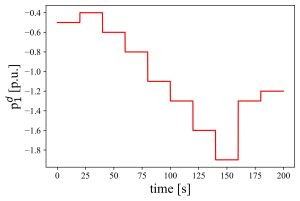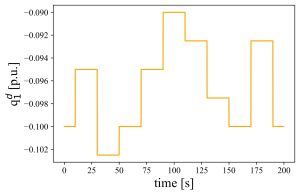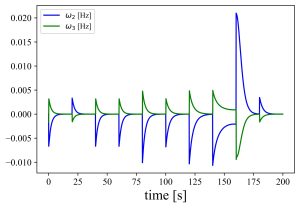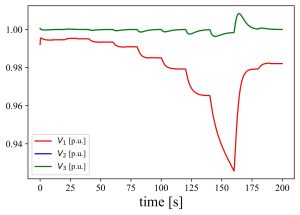Primary and Secondary Control of Dispatchable Virtual Oscillator-Controlled Grid-Forming Inverters
PhD Student T.G. Roberts with Advisor A. Domínguez-García
Grid Forming Inverters (GFMs) are a promising technology for replacing synchronous generators to sustain system voltage and frequency in microgrids with low inertia. In the U.S. bulk power grid, inertia from rotating generators helps resist sudden changes or fluctuations in frequency. Currently, grid following inverters (GFLs) do not possess the capability to regulate their own frequency or voltage, which can lead to grid instability on grids with a high percentage of renewables. GFM inverters however are able to regulate their own voltage and frequency output. Applications of GFMs range from replacing synchronous machines to creating fully renewable microgrids. This research focuses on primary and secondary control of dispatchable virtual oscillator controlled (dVOC) GFMs. We first develop a power-flow model for a three bus microgrid with a dVOC-based inverter at each bus. We then propose a secondary control architecture for regulating frequency and voltage using one integral controller for frequency and one for voltage. This approach is novel, as previously only secondary control for droop-based GFMs has been extensively developed, and dVOC-based control has been shown to have a better dynamic response than conventional droop control. It has applications in microgrid stability and increasing the number of renewables on the grid. The working integral control scheme can be seen in the images below.



